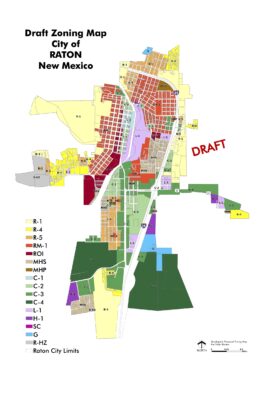by Nancy Christofferson COLORADO TERRITORY — Gray’s Ranch was a growing community when it got a post office on Sept. 1, 1863, almost 152 years ago. Its namesake and owner was James S. Gray.
COLORADO TERRITORY — Gray’s Ranch was a growing community when it got a post office on Sept. 1, 1863, almost 152 years ago. Its namesake and owner was James S. Gray.
The ranch was about five miles southeast of Trinidad, at the confluence of the Purgatory River and what was then named Rito San Lorenz, but which today is known as Gray Creek. Gray settled there in April 1861 and built his adobe structures on the west side of the creek. Outside of the fact that Gray hailed from Kentucky and was a Southern sympathizer, nothing much is known about the man.
Colorado became a territory Feb. 28, 1861. The first election for county officers was held Aug. 19 that year. Gray’s Ranch was the local polling place in that election. The first regular election was Nov. 21, 1861 when Precinct 4 again voted at Gray’s Ranch. The precinct included Trinidad. Two years later, in September 1863, James S. Gray was elected Huerfano County Commissioner. After Las Animas became a county in February 1866, Gray was elected commissioner and served from 1867 until 1870 when he resigned. He may have left the area at that time.
When Colonel Alexander Doniphan marched through this region during the Mexican War, two of his soldiers died and were buried on what later became Gray’s Ranch. When Gray’s wife died in late 1861, she too was interred in the little graveyard.
Gray’s Ranch was in Huerfano County in 1861 and was still in Huerfano County when it got its post office in 1863.
After Gray’s arrival in the area, Dan L. Taylor, said to be a former hotelkeeper at Fort Union in New Mexico, opened a general store at the ranch. A stage station was established in July 1861 by the Missouri Stage Company there as well. The site was 47 miles south of the station at Iron Springs which in turn was about 40 miles south of Bent’s Fort. The next station on the way to Santa Fe was Willow Springs, not far south of Raton Pass.
Gray’s Ranch was considered a civilian outpost or fort. Much like Francisco Fort in La Veta, it was fortified mainly because of the same cantankerous Moache Ute Indian Chief, Kaniache. The 1860s saw many raids by this man and his band, throughout Huerfano and Las Animas counties, and even Colfax County where the Moaches’ home base was the agency at Maxwell’s ranch at Cimarron.
Until 1861, mail was carried between Santa Fe and Missouri via the Cimarron Cutoff, also known as the Dry Route of the Santa Fe Trail, that crossed the Oklahoma panhandle. With the establishment of Fort Wise on the Arkansas River, the post office department changed the route to cross the Mountain Branch. It was because of this that Gray’s Ranch was located along that trail at that time. Besides the population of workers on the ranch, the Gray’s Ranch stage station added more souls to the growing settlement.
In 1862 the community got a scare from some Confederate sympathizers robbing mail from stage coaches not far away and federal troops were sent north from Fort Union. As the site where the Denver to Fort Union stage road met the Bent’s Fort road, Gray’s Ranch got a company of soldiers stationed nearby to guard the mail routes. Troops were there again in 1864. That year the station at Iron Springs, just 40 miles away, was burned down by Cheyennes.
In the spring of 1866, Kaniache and his men were on the upper Purgatory and working their way downstream. Along their path they destroyed crops, stole livestock and killed at least one settler. The chief had lost a son and several other close family members to the white man, and he had no love for them. His depredations continued and Colonel Andrew Alexander, who was in the area with his black soldiers of the Third Cavalry searching for a site for a proposed fort, was sent to confront him. Volunteers from Trinidad joined the ensuing fray some miles north of that town and near the Apishapa River. Three soldiers were killed and Kaniache’s Utes retreated. Unfortunately, they retreated into Huerfano County and killed more settlers on their way to the San Luis Valley.
As a result of these Indian troubles, troops were again stationed at Gray’s Ranch to protect the mail between Bent’s Fort and Raton Pass. The pass had the year before been opened as an “improved” toll road with new bridges, grading and the removal of the larger boulders blocking the way.
A few months later, Gray’s Ranch was the scene of a felony. One of the westbound stage drivers up and quit on arrival at the ranch and boarded another stage heading back east after drawing the pay he was owed. A while later, suspicions arose as to the driver’s honesty, and a messenger was sent to the nearest telegraph office, which happened to be in Denver. From there, an alert was put out for the driver so when he turned up in Junction City, Kansas, it was found he was carrying no less than $1,800 in company funds. This quite obviously led to his arrest.
Otherwise, life may have been pretty humdrum at this outpost on the Colorado frontier. In 1870 the stage line, by then belonging to Wells, Fargo (though formerly the property of Barlow, Sanderson), closed some of the stations along the Santa Fe Trail line, but retained Gray’s Ranch. By this time, its post office had been moved to the even-faster growing town of Trinidad.
When the end came for Gray and his ranch is unknown, but by 1885 the only notable thing on the map of the area was the Gray Creek coal mine.
The Gray Creek Coal and Coking Company owned the mine. The company was struggling and in 1890 ceased production although it retained its property.
A man named Harry McIntosh, an early mine superintendent and later fire boss, was said to have taken “the first shovelful of dirt out of the engine road”. Whatever that means. The date for this singular feat could be placed in the early 1880s.
Activity was resumed in the early 1890s and the camp got its own post office in December 1894. It was named Chapel (probably a misspelling of Chappell) and survived for one month before being renamed Graycreek. The mine and ovens were served by a branch railroad built in 1888 by a subsidiary of the Union Pacific.
GCC&C company in 1900 merged with the Victor Fuel Company and three others to operate five mines and 200 coke ovens on 14,000 acres in Las Animas and Huerfano counties. In 1909 this became the Victor-American Fuel Company.
By 1904, the beehive coke ovens were in full production. The coke proved to be of relatively poor quality, however, so the mines and ovens never achieved much of a name, though they soldiered on, working sporadically, until 1927 when operation ceased and the camp abandoned. The railroad and camp were dismantled. The post office had closed in August 1921.
Only a few miners and coke makers had remained until the end.

From stage station to coal mine
More from NewsMore posts in News »




